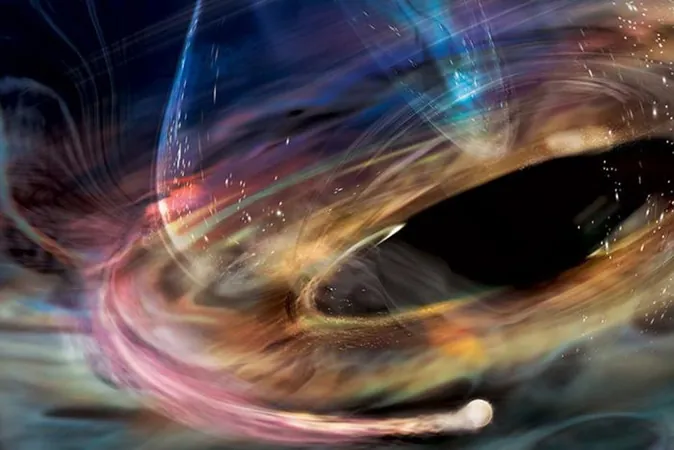
Unraveling the Mystery: A Black Hole That Defies All Expectations!
2025-01-13
Author: Ken Lee
1ES 1927+654: A Supermassive Enigma
In a stunning turn of astronomical events, a mysterious supermassive black hole known as 1ES 1927+654 has begun exhibiting peculiar behavior that has left scientists in awe. This black hole, located approximately 100 million light-years away and containing the mass equivalent to one million suns, is displaying unusual flashing patterns that have never before been documented.
Historical Observations
Researchers first became captivated by the enigmatic black hole back in 2018 when they observed its corona—a swirling shell of hot plasma—suddenly vanish, only to re-emerge a few months later. This peculiar behavior marked it as a subject of intense study, with astronomers stating, “It was so beautiful.” However, a more recent phenomenon has caused an even greater stir among scientists.
A Surge in X-ray Flashes
Over the past two years, they have detected a significant increase in the frequency of X-ray flashes emitted by the black hole. These flashes have transitioned from occurring every 18 minutes to an astonishing rate of once every seven minutes! This remarkable change is unprecedented in black hole observations, prompting expert Megan Masterson, a graduate student in physics at MIT, to declare, “We’ve never seen this dramatic variability in the rate at which it’s flashing. This looked absolutely nothing like a normal black hole.”
Theoretical Implications
The underlying reasons for this unusual behavior remain a mystery. Researchers speculate that the black hole could be holding a spinning white dwarf in a precarious dance near its event horizon. If true, this would suggest that white dwarfs might be able to survive indefinitely close to a black hole without being swallowed whole. Masterson commented on this possibility, stating, “This would be the closest thing that we know of around any black hole,” highlighting the potential for new research avenues.
Potential for Future Discoveries
In addition to this thrilling discovery, scientists believe that if a white dwarf is indeed caught in this gravitational ballet, it may emit gravitational waves, providing further evidence to study with future advanced observatories.
Conclusion
The remarkable findings have been documented in a cutting-edge article entitled "Milli-Hertz Oscillations Near the Innermost Orbit of an Extreme Supermassive Black Hole," published in the esteemed journal Nature. As astronomers continue to unravel the secrets of 1ES 1927+654, this enigmatic black hole holds the promise of reshaping our understanding of black hole physics and the dynamics of celestial bodies in extreme gravitational fields. Stay tuned for more astronomical revelations!



 Brasil (PT)
Brasil (PT)
 Canada (EN)
Canada (EN)
 Chile (ES)
Chile (ES)
 Česko (CS)
Česko (CS)
 대한민국 (KO)
대한민국 (KO)
 España (ES)
España (ES)
 France (FR)
France (FR)
 Hong Kong (EN)
Hong Kong (EN)
 Italia (IT)
Italia (IT)
 日本 (JA)
日本 (JA)
 Magyarország (HU)
Magyarország (HU)
 Norge (NO)
Norge (NO)
 Polska (PL)
Polska (PL)
 Schweiz (DE)
Schweiz (DE)
 Singapore (EN)
Singapore (EN)
 Sverige (SV)
Sverige (SV)
 Suomi (FI)
Suomi (FI)
 Türkiye (TR)
Türkiye (TR)
 الإمارات العربية المتحدة (AR)
الإمارات العربية المتحدة (AR)